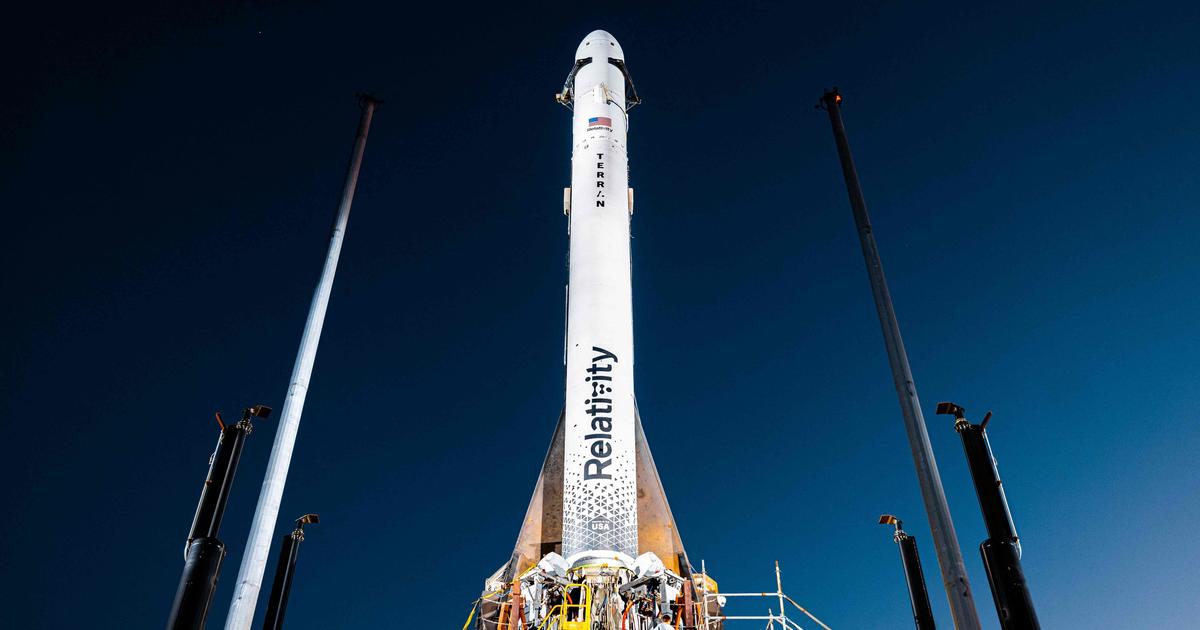A 3D-printed rocket is due to take off for the first time this Saturday, March 11, from Cape Canaveral, Florida, for a maiden flight that could, if successful, help revolutionize the launch industry.
The rocket, called Terran 1, is developed by the company Relativity Space.
The shooting window extends from 1:00 p.m. to 4:00 p.m. local time.
The purpose of this first test flight is to prove that the machine can withstand the pressure of a take-off, and to recover as much data as possible for the further development of these rockets, which are cheaper and easier to manufacture, according to the company.
In total, 85% of the mass of the rocket was printed in 3D, and the company is aiming for 95% in the future.
Read alsoThe failure of the H3 rocket, another setback for Japan
The advantages are multiple: reducing costs and simplifying the manufacturing process, while offering greater flexibility.
With its large 3D printing robots, the company claims to divide the number of parts by 100 compared to a traditional rocket.
It also highlights the speed of the method: 60 days, from raw material to finished product.
The Terran 1 rocket is 33.5 meters tall, with a diameter of just over 2 meters.
Its first stage has nine motors, also 3D printed, and its second stage, one motor.
A first launch attempt was canceled at the last minute on Wednesday due to a technical problem.
Fuel "
of the future
"
It uses methalox as fuel, a mixture of liquid oxygen and liquefied natural gas (essentially methane).
If it succeeds in reaching Earth orbit on Saturday, it would be the first rocket using this fuel to do so.
Relativity Space, which has a long-term vision of participating in the development of a multi-planetary humanity, argues that it is the fuel "
of the future
", and the easiest to produce on Mars.
United Launch Alliance's Vulcan and SpaceX's Starship rockets in development are also to use this fuel.
The Terran 1 rocket must be able to place 1250 kg in low Earth orbit.
But this first flight does not contain a payload.
Relativity Space is also developing a larger rocket, Terran R, capable of carrying 20,000 kg to low orbit.
A launch date is not expected before 2024.
Read alsoUnited States: the SpaceX rocket took off for the International Space Station
The company, based in Long Beach, has already signed contracts worth $1.65 billion, according to Tim Ellis, the young boss of the company, which he co-founded in 2015. The majority of these contracts relate to the rocket more big Terran R. One of them was passed with the company OneWeb, which wants to provide internet access from space thanks to a constellation of satellites.
This type of rocket "
medium-heavy is clearly where the most important market opportunity is for the rest of the decade, with a huge shortage currently in this class of payload
", tweeted Tim Ellis on Tuesday.
A satellite operator can wait years before obtaining a place in the big rockets of Arianespace or SpaceX.
Dozens of start-ups have entered the small and medium rocket market in recent years to meet demand.

